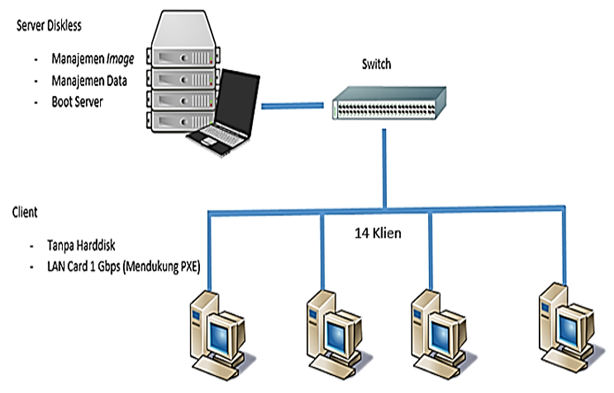Analysis and Design of A Computer Network Without A Hard Drive (Diskless) at the Pacitan AKN Network Laboratory Using the Preboot Execution Environment (PXE) Method
Abstract
ABSTRACT
Technological developments have provided many changes in all activities. Technology makes work faster and more efficient. Preboot Execution Environment (PXE) is one of the technological developments in the network field. PXE is a mechanism on the network that allows a client to boot and enter the operating system without using a hard drive. There are several advantages to implementing this method, including the ease of carrying out laboratory maintenance, security from misuse of computers, and viruses. The network laboratory is one of the laboratories used by the Computer and Network Maintenance study program at AKN Pacitan. Educational Laboratory Institutions (PLP) are in charge of carrying out maintenance to ensure the computer can run normally, if there is damage such as a virus attack, computer abuse, hardware then PLP must make repairs. This requires a long process. So that the PXE method is very appropriate to be applied in network laboratories. The application of PXE in a network laboratory was successfully carried out. Client computers can run without using a hard drive. The computer is running normally with five clients. With an average network speed of 98Mbps and using conventional hard drives for reading and storing, the process was extremely slow for all 14 clients running concurrently.
Downloads

Copyright (c) 2021 Jurnal Ecotipe (Electronic, Control, Telecommunication, Information, and Power Engineering)

This work is licensed under a Creative Commons Attribution 4.0 International License.
Copyright in each article is the property of the author.
- The author acknowledges that the Jurnal Ecotipe (Electronic, Control, Telecommunication, Information, and Power Engineering) has the right to publish for the first time with a Creative Commons Attribution 4.0 International License.
- The author can enter the writing separately, regulate the non-exculsive distribution of manuscripts that have been published in this journal into other versions (for example: sent to the author's institution respository, publication into books, etc.), by acknowledging that the manuscript was first published in the Jurnal Ecotipe (Electronic, Control, Telecommunication, Information, and Power Engineering);

























